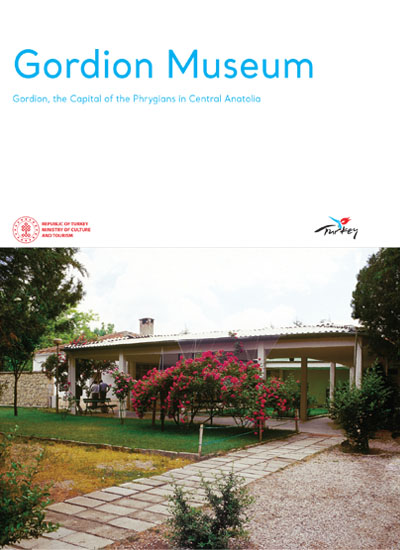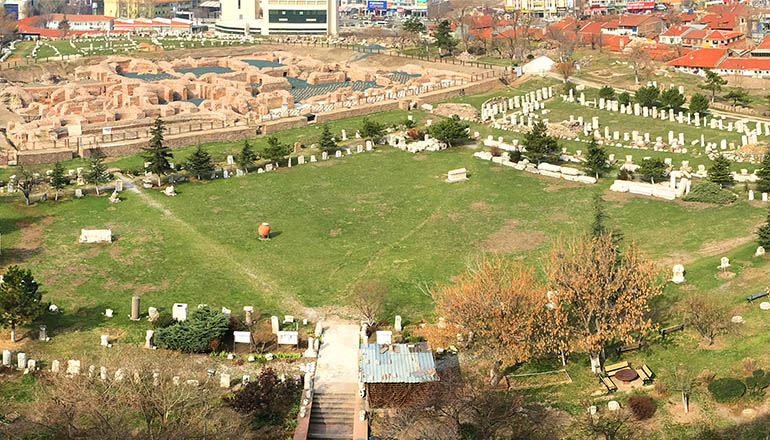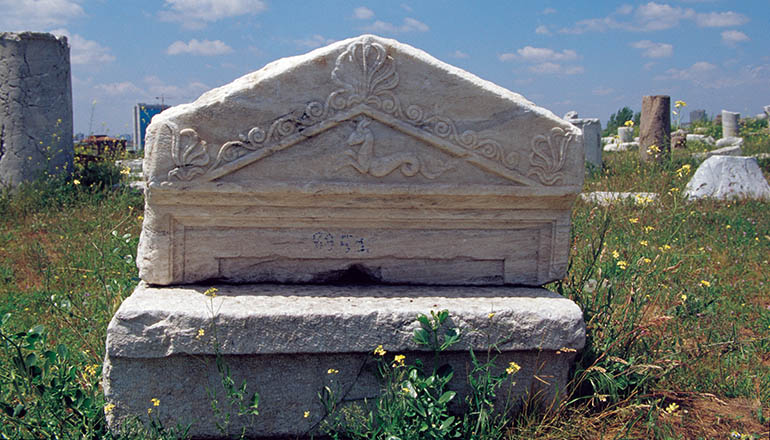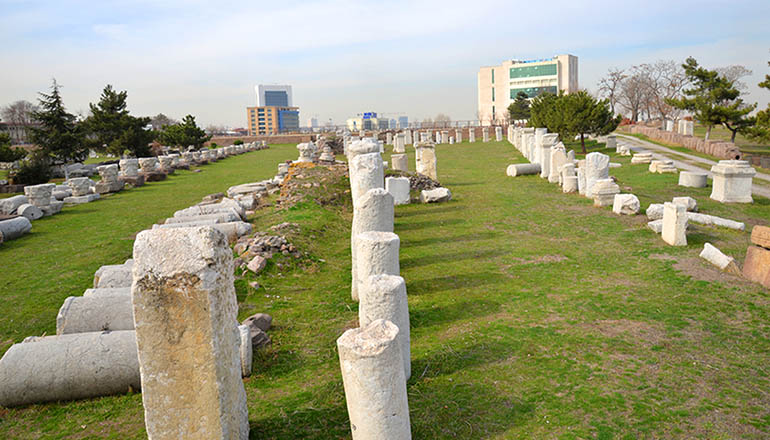The Gordion Museum was constructed in 1963 adjacent to the small village of Yassıhöyük, which had a population of 500. The museum features works from the early Bronze Age, followed by works from the early Phrygian era, which culminated with King Midas. Exhibited works include handmade pots and pans from the early Iron Age, iron tools, and textile production tools from the early Phrygian period. The new exhibition hall showcases a panoramic display case featuring a typical item from the demolished block dating back to 700 BC. The remaining section of the new hall exhibits imported ancient Greek ceramics, as well as items from the Hellenistic and Roman periods dating from the 6th century BC to the 4th century AD. In the final section of the hall, visitors can view the seals and coins discovered in Gordion. The Galat Tomb “Mound O” The tomb unearthed in 1954 as a result of an illegal excavation was named “Tumulus O” by the Gordion excavation team. Over the past fifty years, the memorial tomb has suffered damage from both natural and human factors. However, it has been saved from destruction thanks to the intervention of the Ministry of Culture and Tourism. The experts of the museum drew and enumerated the stone blocks of the tomb. The tomb was then reconstructed in the garden of Gordion Museum and opened to visitors in 1999. Phyrigian Mounds In the vicinity of Gordion, there is a wide area filled with mounds of varying sizes. These mounds are the tombs of Phrygian nobles and notables dating back to the period between the last quarter of the 8th century BC and the middle of the 6th century BC. The Great Mound, which stands at 55m tall and has a diameter of 300m, is the second largest mound in Turkey and boasts a magnificent appearance.
GORDION MUSEUM






